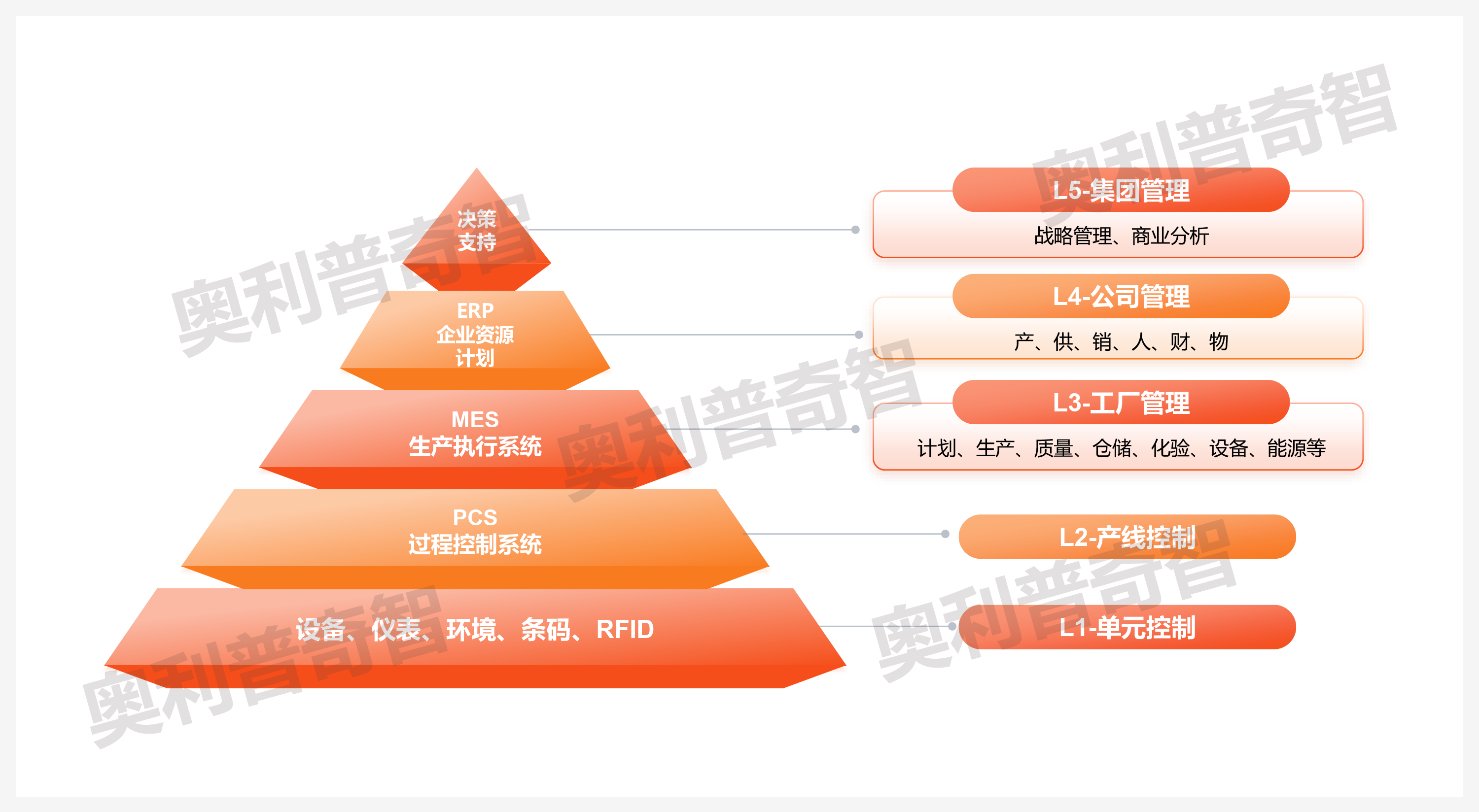-
Automated production line: By using automated equipment, we can increase production volume, enhance the stability of product quality, reduce labor costs, and accelerate the internal logistics process.
-
Standardization of production methods: Standardization of raw materials and product quality indicators, such as raw material quality indicators, process formulas, process and product quality, production (temperature/humidity, wind force, etc.) environment, etc.
-
Digitalization of the production process: Through MES, data is used to connect various departments and production processes. Real-time data collection replaces manual statistics. The concept of management based on ERP on a daily basis is transformed into real-time management, which enhances the speed of feedback and response, enabling quick decision-making and effectively improving work efficiency.
-
Process monitoring visualization: Display production, quality, and equipment information on a large screen, allowing for an intuitive view of production progress, real-time quality, equipment status, and abnormal alarms, thereby enabling rapid and accurate scheduling of production progress, quality abnormalities, and equipment failures.
-
Integrated Traceability Management: By integrating the data chain of raw materials, auxiliary materials and finished products through MES, reverse and forward traceability can be achieved. This enables the accurate restoration of problem products, tracing all the information such as personnel, machines, materials, methods, environment and conditions throughout the production process, in order to meet the extremely high traceability requirements of the food industry for products.
-
Electronicization of batch records: Through an information system, batch records can be made electronic, which can improve the accuracy and consistency of batch records, reduce compliance costs, enhance production efficiency, shorten production cycles, and ensure the authenticity, timeliness and validity of the data.
Snack foods

Industry pain points
Advantages and Effects of the Plan
Solution

Typical case




